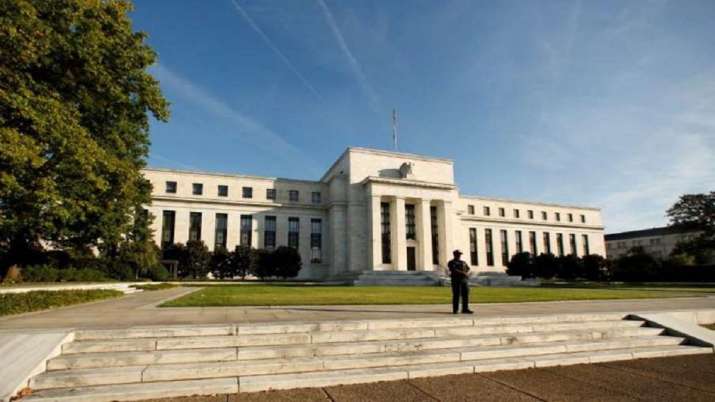
Controlling inflation: This is the biggest increase in nearly three decades.
Highlight
- It is indicating that there will be more major rate hikes to come which will increase the risk of another recession.
- Central bank trying to tighten credit and slow growth, with inflation reaching 8.6%
- The move could impact many consumer and business loans by 1.5% to 1.75%
US Federal Reserve hikes interest rate: The Federal Reserve on Wednesday stepped up its campaign to tame high inflation by raising its key interest rate by three-quarters of a point – its biggest increase in nearly three decades – and a sign of big rate hikes to come. Which will increase the risk of another recession.
The move, announced by the Fed after its latest policy meeting, would raise its benchmark short-term rate, which affects many consumer and business loans, to a range of 1.5% to 1.75%.
The central bank intensified its drive to strengthen credit and slow growth as inflation hit a four-decade high of 8.6%, spreading to more sectors of the economy and showing no signs of slowing showing. Americans are also expecting higher inflation to last longer than previously thought. This sentiment could embed an inflationary psychology in the economy that would make it harder to bring inflation back to the Fed’s 2% target.
The Fed’s three-quarter-point increase is more than the half-point increase that Chair Jerome Powell suggested earlier this week is likely to be announced. The Fed’s decision to raise the rate as big as Wednesday was an acknowledgment that it is struggling to contain the momentum and persistence of inflation, worsened by Russia’s war on Ukraine and its effects on energy prices. .
The cost of borrowing in the US economy has already risen sharply in response to the Fed’s moves, with the average 30-year fixed mortgage rate above 6%, its highest level before the 2008 financial crisis, from just 3% initially. above year. The yield on the 2-year Treasury note, the benchmark for corporate borrowing, rose to 3.3%, its highest level since 2007.
Even if the recession is avoidable, economists say it is almost inevitable that the Fed will have to inflict some pain – most likely in the form of high unemployment – as the price of defeating chronically high inflation.
Inflation has risen on top of voter concerns in the months before Congress’ midterm elections, soured public outlooks about the economy, weakened President Joe Biden’s approval ratings and the prospect of Democratic losses in November. has increased. Biden has tried to show that he recognizes the pain inflation is causing to American families, but has struggled to find policy actions that can make a real difference. The president has emphasized his belief that the power to curb inflation rests primarily with the Fed.
Yet the Fed’s rate hikes are blunt tools for trying to tame inflation as well as maintain growth. Shortages of oil, gasoline and food are driving inflation. The Fed is not ideally suited to address many of the roots of inflation, including Russia’s invasion of Ukraine, the still-shut global supply chain, labor shortages and rising demand for services from airline tickets to restaurant meals.
Expectations of big Fed hikes have sent a range of interest rates to their highest points in years. The yield on the benchmark 2-year Treasury note for corporate bonds has reached 3.3%, its highest level since 2007. The 10-year Treasury yield, which directly affects mortgage rates, has risen to 3.4%, nearly half-a-points since last week and the highest level since 2011.
Investments around the world, from bonds to bitcoin, have fallen in recent months on fears of high inflation and the possibility that the Fed’s aggressive drive to control it will lead to a recession. Even if the Fed manages to make a delicate move to curb inflation without causing a recession, higher rates will still put pressure on stock prices. Meeting the definition of a bear market, the S&P 500 has already sunk more than 20% this year.
Other central banks around the world are also acting increasingly to try to suppress rising inflation, with even their countries at greater risk of recession than the US. 11 years. If inflation remains at record-high levels, it could announce a major hike in September. On Wednesday, the ECB vowed to create a market backstop that could buffer member countries against the financial turmoil that erupted during the debt crisis more than a decade ago.
The Bank of England has raised rates four times since December to a 13-year high, despite predictions that economic growth would remain unchanged in the second quarter. BoE will hold interest rate meeting on Thursday.
The 19 EU countries that use the euro currency endured a record inflation of 8.1% last month. The United Kingdom hit a 40-year high of 9% in April. Although debt servicing costs are contained for now, rising borrowing costs for indebted governments have threatened to break the eurozone in the early part of the last decade.
Last week, the World Bank warned of the threat of “inflation” – slow growth coupled with high inflation around the world.
A key reason for the prospect of a recession is that economists increasingly believe that for the Fed to slow inflation to its 2% target, consumer spending, wage gains and economic growth will need to be sharply reduced. Ultimately, the unemployment rate will almost certainly have to rise — something the Fed hasn’t forecast yet, but in updated economic projections it will release Wednesday.
Read also: Will the Federal Reserve hike rates to fight inflation? verdict today